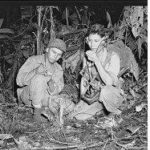From the California gold rush to Vincent Chin’s killing and beyond, “The Fortunes” lays bare a past laced with suffering.
By Claire Fallon , Culture Writer
The Huffington Post, September 16, 2016 —

HOUGHTON MIFFLIN HARCOURT
The Fortunes, Peter Ho Davies’ second novel, reads like a very unusual hybrid between a novel and a short story collection. It’s written in four long sections, titled “Gold,” “Silver,” “Jade,” and “Pearl,” each of which tells a different person’s story. Together, of course, the pieces make a larger whole: a story of Chinese America through the decades, including many fragments that are tempting for white Americans to leave out.
“Gold,” set during the California gold rush, follows Ah Ling, a character based on a real manservant whose diligence supposedly inspired his employer, railroad baron Charles Crocker, to employ Chinese labor on the Central Pacific Railroad. Ho Davies digs deep into Ah Ling as a character, painting him as the orphaned child of a Tanka sex worker and a john, a white “ghost.” Sent to California by his extended family to seek his fortune ― or, rather, sold off by his family to get him off their hands ― he labors first in a laundry, alongside a prostitute named Mei Mei with whom he falls in love, though she’s embittered by a young life spent satisfying the sexual urges of white men. Then he finds work as Crocker’s personal valet, always seeking a piece of the golden plenty he hoped to find bursting from the ground in America.
“Silver” jumps forward to a more knowable historical figure, Anna May Wong, known as the first Chinese-American film star. Her body of work, her celebrity, and the pervasive segregation, exoticization and discrimination she faced have largely been brushed aside in retellings of the Golden Age of Hollywood, but her vamping photos and measured interviews remain.
“Jade” focuses on the killing of Vincent Chin, who was brutally beaten to death with a baseball bat by two white men after a racially charged altercation at a club in a Detroit suburb. It was Chin’s bachelor party; after four days in the hospital, he died. He was buried on what was to have been his wedding day. Ho Davies takes the voice of an unnamed Chinese-American friend who was with Chin when he died, and who has been present through the trials and the groundswell of pan-Asian-American activism that was born from the aftermath, but who still can’t forgive himself for running away from the fight.
The final section, “Pearl,” is a contemporary story, an extended vignette about a half-Chinese, half-white American man, John, who is visiting China for the first time. He’s there, with his white wife Nola, to pick up the Chinese baby they’re adopting.
With four distinct historical moments, the novel shifts dramatically in style and tone at times.
“Gold,” though it opens with a hilarious, sharply written scene, struggles the most to find a rhythm. During this more straightforward historical fiction tale, depicting a more distant era in gleaming detail, Ho Davies allows Ah Ling to slip into what sometimes seems like anachronistic language, modern social justice observations irrepressibly voiced through his character. When Crocker mentions hearing that some Chinese laborers had been buried in an avalanche while working in the mountains, Ling notices “that he couldn’t recall the exact number of Chinese ― ‘ten or fifteen supposedly’ ― and this from a man who could tell you the price of a shovel in 1854.” It’s chilling, but it also feels a rather fine detail to pick out in a time of so much open exploitation.
Of course, these moments of historical uncertainty have another source ― embarrassingly, I can’t say I’ve read any primary sources about the quotidian life of Chinese immigrants during the gold rush. Part of the joy and value of The Fortunes lies in its vivid survey of the history of Chinese people in America, and many readers, especially non-Asian-American readers, might find their eyes opened to a new understanding of the Chinese-American historical identity. The thriving traffic of Chinese women sold into sex work in California gold rush towns, the anti-miscegenation laws that later prevented Anna May Wong from marrying any of the white co-stars and industry players with whom she was involved, the horrific abuse of Chinese labor on the railroad, and the reality of hate crimes against Asian-Americans ― much of the ground Ho Davies dramatizes is glossed over in American history lessons and brushed aside with quips about Asian-Americans being “the model minority,” or “basically white.”
Turning to Anna May Wong and Vincent Chin, Ho Davies’ prose seems to grow more pointed, more specific, perhaps because their lives (or deaths) are more familiar. In Wong’s dreamy vignettes and musings, he has her reflect on conversations, career moments that forced her to examine her identity. Is she a star? An actress? Chinese? American? A lovable woman or a temporary diversion?
“She isn’t a star, she thinks later. Or an actress. But something in between. The first Chinese star, they call her, and it’s the qualifications that are crucial. First. Chinese. A star may play only him- or herself, but she is supposed to play a race. How can she be herself and represent millions, both at once?
The Fortunes
Vincent Chin’s friend, looking back decades after the slaying, wants to remember his friend as he really was: rebellious, yet eager to fit in, to be all-American. As a man who wouldn’t run away from a fight, even though he had a loving mother and future wife to live for. Yet he’s also afraid to remember the last night he spent with his friend, as they were confronted by Ronald Ebens and his stepson, Michael Nitz, Ebens reportedly shouting, “It’s because of you little motherfuckers that we’re out of work!” (He was referring to the Japanese auto manufacturers, and Ebens was employed at the time.) He’s afraid to remember how the pair later spent 30 minutes following the friends, trying to find them, before tracking them down and smashing Chin’s head in with a baseball bat.
Ho Davies’ deliberate circling of the event is implacable, as the narrator darkly picks apart racist jokes and plays with the language of casual racism. The inevitable scene, too, is gut-wrenching. But the surrounding questions of what it all meant ― for Asian-American activists, the community, for Chin’s family, for the friend himself ― also leave the reader spinning.
The final section offers the most knotted questions of all, with a conflicted John, half-Chinese, adopting a Chinese baby with his white wife. Every past section in The Fortunes informs the one that follows, just as history informs the present, and this section is informed by all that has come before. The cumulative trauma of so much bigotry, violence, and hate can’t be dropped with the ease that every character seems to want. Adopting a Chinese baby can’t be as simple, for the white couples John and Nola are with, as making sure the baby eats Chinese food. But at the same time, John grew up without speaking Chinese, as an American ― did that mean he’d lost touch with himself, as these adoptive parents feared their child might? John’s parents, and now John and Nola themselves, struggle with what it means for a Chinese person to choose a white partner, with all the unsteady power dynamics that attend that interracial romance. The Fortunes doesn’t have an answer to any of the many painful identity questions posed here.
Actually, The Fortunes is the kind of book that raises far more questions than it resolves. Not only does it present a vast swathe of often-ignored history, in deftly fictionalized form, it’s an empathetic book, not just to its protagonists but to its secondary and tertiary characters and even, often, to its villains. It questions motivations, feelings, intentions, rarely certain despite the author’s fictional imperative. Sometimes I found myself wondering ― why is Vincent Chin’s friend curious at all about the kind of father-stepson relationship Chin’s killers had? Why should I care?
But The Fortunes isn’t out to convince you that you should care about that, or anything in particular. Instead, it’s doing what a great novel should do: revealing what there is to care about and to think about. Even better, it’s revealing those questions about a slice of history that America needs to be dealing with.
The Bottom Line:
In a thought-provoking, sharply written, four-part novelistic chronicle of Chinese-American life, The Fortunes proves uneven at times but the powerful prose and themes shine through.
What other reviewers think:
The Guardian: “A challenging work, the novel uses multiple eras to riff on questions of race and belonging: how to be American in a non-white skin? How to be Chinese, American, neither or both? Is it possible to acknowledge these questions while answering a further one: how, finally, to live?”
The New York Times: “Davies clearly has a subtle conceit in mind. If he invokes a litany of ethnic clichés and stereotypes, it’s not in order to subvert or endorse them, but to identify where authenticity is possible regardless.”
Who wrote it?
Peter Ho Davies is the author of the novel The Welsh Girl, which was longlisted for the Man Booker Prize, as well as two collections of short fiction. In 2003, Granta named him one of the Best of Young British Novelists. Half Welsh and half Chinese, he grew up in England and now lives most of the time in the United States, where he teaches at the University of Michigan.
Who will read it?
Readers who love historical fiction, especially about America’s past, and fans of multigenerational sagas.
Opening lines:
“It was like riding in a treasure chest, Ling thought. Or one of the mistress’s velvet jewel cases. The glinting brasswork, the twinkling, tinkling chandelier dangling like a teardrop from the inlaid walnut ceiling, the etched glass and flocked wallpaper and pendulous silk. And the jewel at the center of the box ― Charles Crocker, Esquire, Mister Charley, biggest of the Big Four barons of the Central Pacific Railroad, resting on the plump brocaded upholstery, massive as a Buddha, snoring in time to the panting, puffing engine hauling them uphill.”
Notable passage:
“She isn’t a star, she thinks later. Or an actress. But something in between. The first Chinese star, they call her, and it’s the qualifications that are crucial. First. Chinese. A star may play only him- or herself, but she is supposed to play a race. How can she be herself and represent millions, both at once? And who does she represent them to? To themselves or others? Who does she think she is? An outraged Nationalist critic has demanded. She wishes she could stay.
“Not a star, then. A star gives off its own light. Another celestial body, a moon, reflecting others’ light.”
The Fortunes
by Peter Ho Davies
Houghton Mifflin Harcourt, $27.00
Published Sept. 6, 2016
The Bottom Line is a weekly review combining plot description and analysis with fun tidbits about the book.










